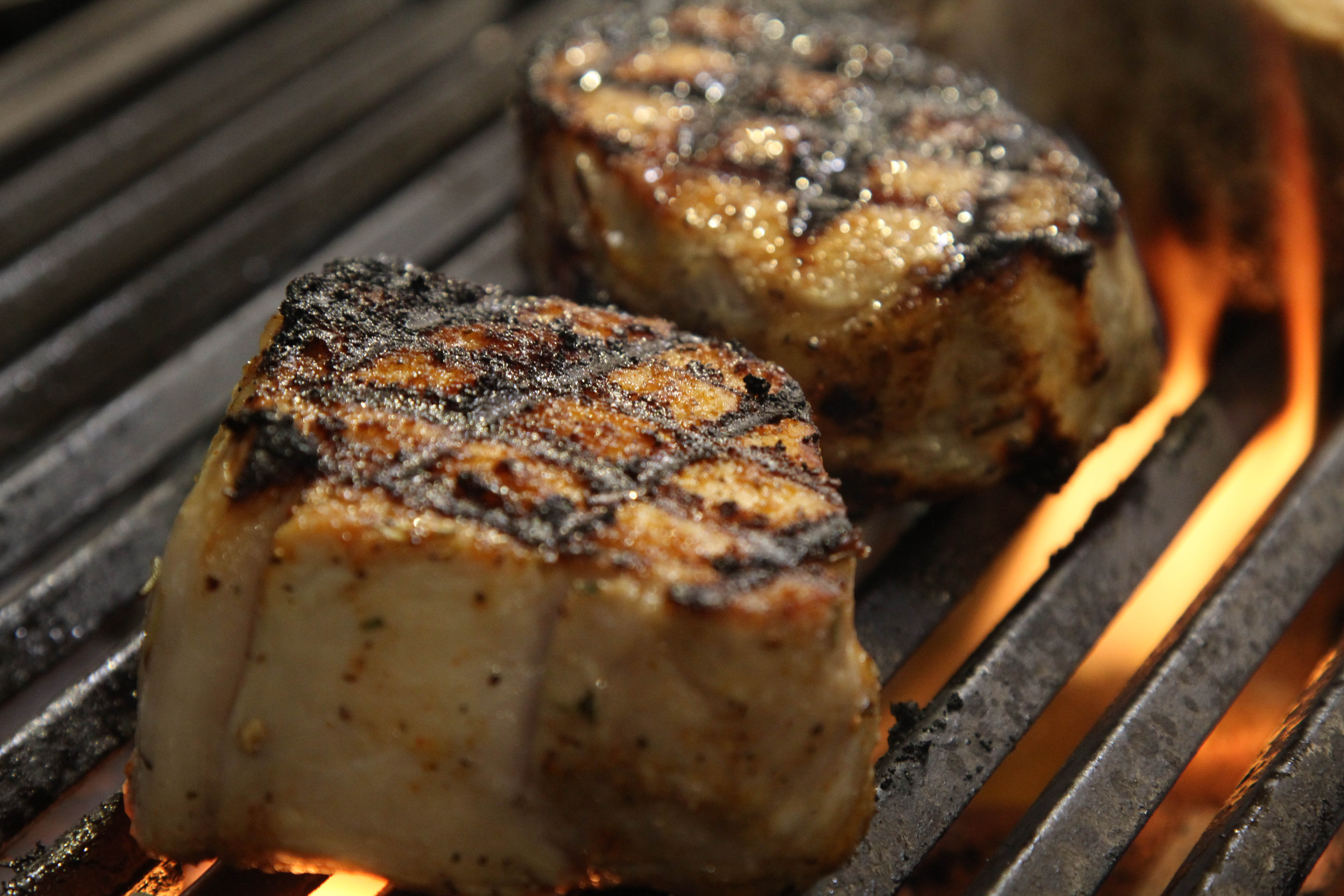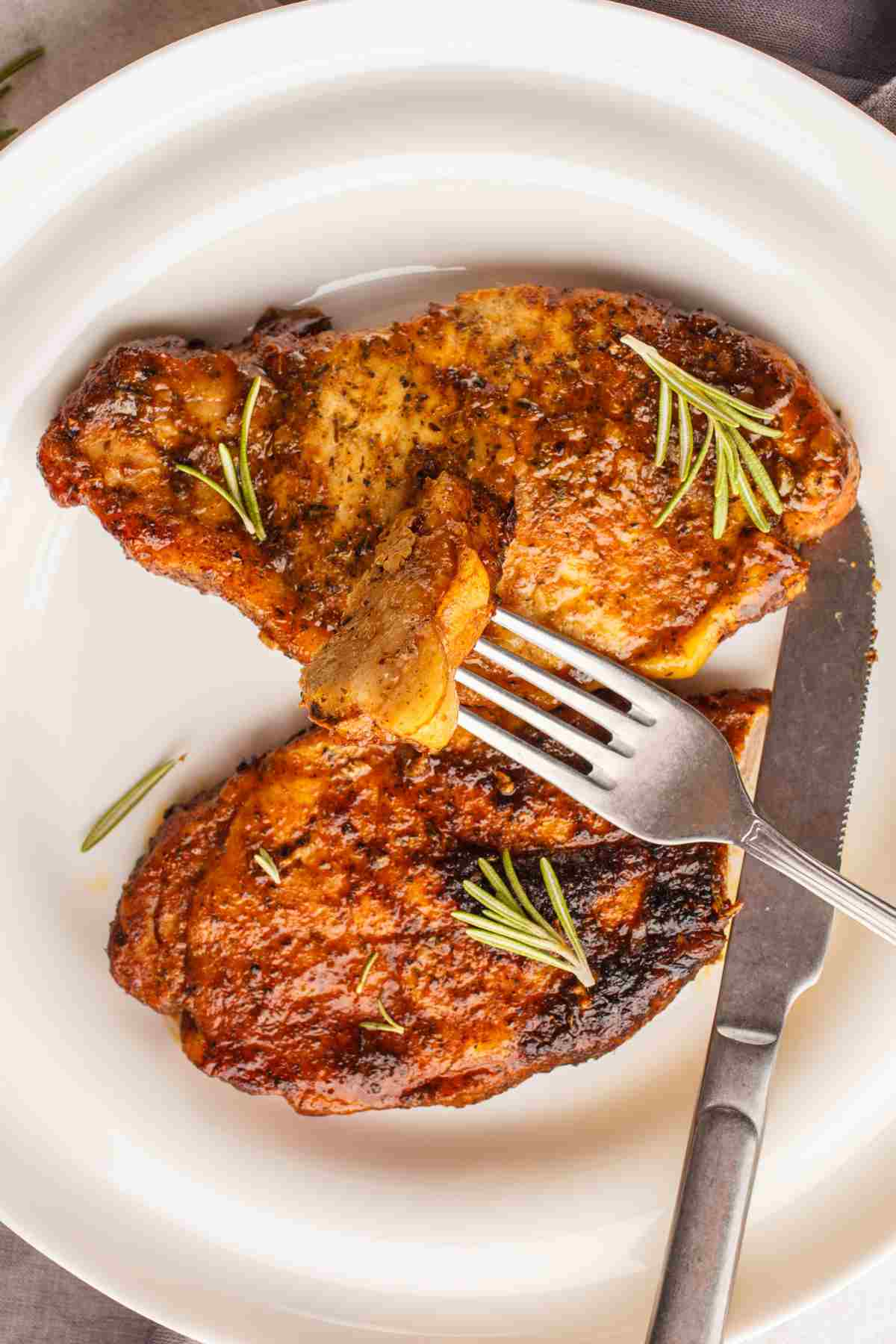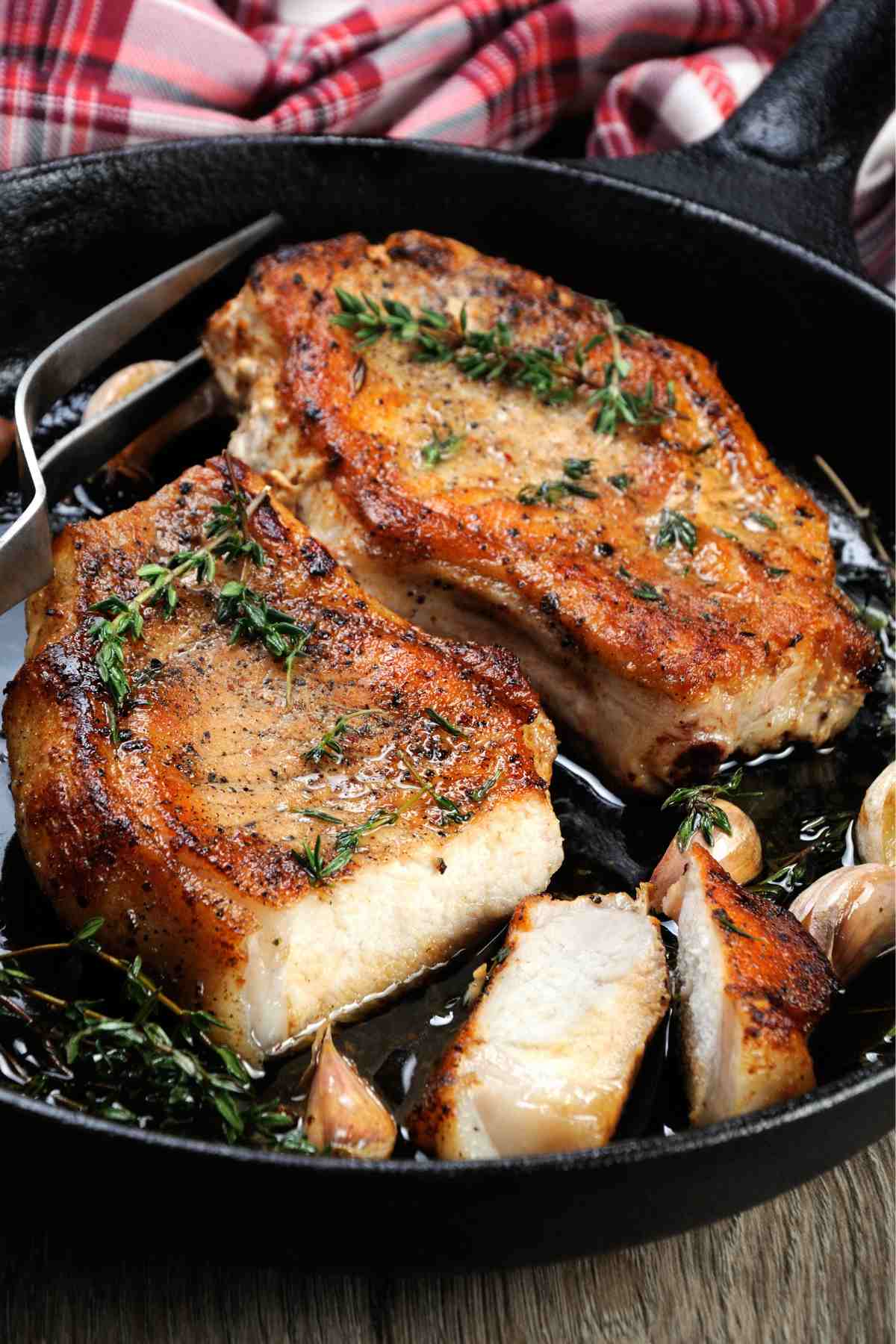Perfectly Juicy Pork Chops: Nailing The Internal Cooked Temp Of Pork Chops
Alright folks, let’s talk about something that’s near and dear to our hearts: pork chops. Now, I don’t know about you, but nothing ruins a dinner like an overcooked pork chop. You know the kind—dry, tough, and flavorless. But here’s the deal: cooking pork chops to perfection is all about hitting that sweet spot when it comes to the internal cooked temp of pork chops. Stick with me, and I’ll break it down so you can serve up juicy, tender pork chops every single time.
Here’s the thing: pork chops have come a long way from the days when we were told to cook them until they turned into shoe leather. Modern food safety guidelines and cooking techniques have made it possible to enjoy pork chops that are both safe to eat and packed with flavor. And guess what? It all starts with understanding the right internal temperature.
Now, before we dive deep into the world of pork chop perfection, let me drop a quick disclaimer: this isn’t just about cooking; it’s about serving something that your family and friends will rave about. So, grab your thermometer, roll up your sleeves, and let’s get into the nitty-gritty of pork chop cooking!
- Killing E V E The Untold Story That Will Blow Your Mind
- Is Jim Caviezel Married Unveiling The Personal Life Of The Hollywood Heartthrob
Why Does Internal Cooked Temp Matter?
Let’s get real for a second. Cooking is as much about science as it is about art. When it comes to pork chops, the internal cooked temp matters because it directly affects the texture, flavor, and safety of the meat. Cook it too little, and you risk foodborne illnesses. Cook it too much, and you end up with a chewy piece of disappointment. But get it just right, and you’re in for a culinary masterpiece.
According to the USDA, the minimum safe internal temperature for pork chops is 145°F (63°C), followed by a three-minute rest. This guideline ensures that any harmful bacteria are destroyed while still leaving the meat juicy and tender. But here’s where things get interesting: some chefs argue that you can go slightly lower for a more medium-rare texture, as long as you’re confident in the quality of your pork. It’s all about balancing safety with taste.
What Happens When You Overcook Pork Chops?
Overcooking pork chops is like taking a perfect sunset and covering it with clouds. Here’s what happens:
- Channel Bravo On Directv Your Ultimate Guide To Entertainment
- Brittany Henry The Rising Star In The Entertainment World
- Dryness: When you cook pork chops beyond the recommended temperature, the moisture evaporates, leaving you with a dry, flavorless piece of meat.
- Tough Texture: Overcooking causes the proteins in the meat to contract and toughen, making it hard to chew.
- Loss of Flavor: The longer you cook pork chops, the more you risk losing the natural flavors that make them so delicious.
So, if you want to avoid these pitfalls, pay close attention to the internal cooked temp of pork chops. It’s the key to unlocking their full potential.
Tools of the Trade: Your Meat Thermometer
Here’s the deal: if you want to nail the internal cooked temp of pork chops, you need a reliable meat thermometer. No ifs, ands, or buts about it. Sure, you could rely on the old “cut it open and check” method, but that’s not only messy—it’s also imprecise. A thermometer takes the guesswork out of the equation.
Types of Meat Thermometers
There are a few different types of meat thermometers you can choose from:
- Instant-Read Thermometers: These are great for quick readings and are perfect for checking the internal temp of pork chops.
- Thermoprobes: These are a bit more advanced and often come with digital displays and alarms to let you know when your meat has reached the desired temperature.
- Oven-Safe Thermometers: If you’re roasting a larger cut of meat, these are a good option, but for pork chops, an instant-read thermometer is usually the way to go.
Invest in a good-quality thermometer, and you’ll thank yourself every time you serve up perfectly cooked pork chops.
How to Check the Internal Cooked Temp of Pork Chops
Okay, so you’ve got your thermometer ready. Now what? Here’s how you check the internal cooked temp of pork chops:
- Insert the thermometer into the thickest part of the chop, avoiding any bones.
- Wait for the reading to stabilize. For most instant-read thermometers, this should take about 5-10 seconds.
- Compare the reading to the recommended internal temp of 145°F (63°C).
Pro tip: Don’t just check one chop. If you’re cooking multiple chops, check a few to ensure they’re all cooked evenly.
Factors That Affect Cooking Time and Temp
Not all pork chops are created equal. Several factors can affect how long it takes to reach the ideal internal cooked temp:
Thickness of the Chops
Thicker chops will obviously take longer to cook than thinner ones. As a general rule, thicker chops should be cooked at a lower temperature for a longer time to ensure even cooking.
Cooking Method
Whether you’re grilling, pan-searing, or baking your pork chops, the method you choose will impact the cooking time and internal temp. For example, grilling can cook chops faster but requires careful monitoring to avoid overcooking.
Starting Temperature
If you take your pork chops straight from the fridge and throw them on the grill, they’ll take longer to cook than if you let them sit at room temperature for 30 minutes beforehand. Always let your meat come to room temp before cooking for more even results.
Perfect Pork Chop Recipes
Now that you know the importance of the internal cooked temp of pork chops, let’s talk about some recipes that will take your pork chops to the next level.
Pan-Seared Pork Chops with Garlic Herb Butter
Here’s a quick and easy recipe:
- Season your pork chops with salt, pepper, and your favorite herbs.
- Heat a skillet over medium-high heat and add a tablespoon of oil.
- Once the skillet is hot, add the chops and sear for 3-4 minutes on each side.
- Check the internal temp and remove from heat when it reaches 145°F.
- Let the chops rest for a few minutes, then serve with a pat of garlic herb butter on top.
This recipe is simple, but the results are anything but. The garlic herb butter takes the flavor to the next level.
Common Mistakes to Avoid
Even the best cooks make mistakes sometimes. Here are a few common ones to watch out for:
- Not Using a Thermometer: Don’t rely on guesswork. Use a thermometer to ensure accuracy.
- Cooking Too Hot: High heat can lead to uneven cooking, leaving the outside burned while the inside is still raw.
- Skipping the Rest: Letting your pork chops rest for a few minutes after cooking allows the juices to redistribute, resulting in a juicier final product.
By avoiding these mistakes, you’ll be well on your way to pork chop perfection.
Tips for Tenderizing Pork Chops
Even with the right internal cooked temp, tough pork chops can ruin a meal. Here are a few tips to keep your chops tender:
- Marinate: A good marinade can work wonders for tenderizing meat. Try a mixture of acid (like vinegar or lemon juice), oil, and seasonings.
- Brine: Brining involves soaking the meat in a saltwater solution, which helps retain moisture during cooking.
- Pound It Out: If you’re working with thicker chops, pounding them out to an even thickness can help them cook more evenly and stay tender.
Experiment with these techniques to find what works best for you.
The Science Behind Pork Chop Cooking
If you’re a food science nerd like me, you might be wondering what’s actually happening inside the pork chop as it cooks. Here’s a quick breakdown:
- Denaturation: As the temperature rises, the proteins in the meat begin to denature, or unfold. This process is what gives cooked meat its firm texture.
- Moisture Loss: Above a certain temperature, the moisture in the meat begins to evaporate, leading to dryness.
- Browning Reactions: The Maillard reaction, which occurs at high temperatures, is responsible for the delicious browned crust on your pork chops.
Understanding these processes can help you make more informed decisions in the kitchen.
Conclusion: Your Path to Pork Chop Perfection
Alright, folks, that’s the lowdown on the internal cooked temp of pork chops. By paying attention to temperature, using the right tools, and avoiding common mistakes, you can serve up pork chops that are juicy, tender, and full of flavor every time. So, what are you waiting for? Grab your thermometer, head to the kitchen, and start cooking!
And don’t forget to leave a comment below with your favorite pork chop recipe or any questions you might have. Sharing is caring, and who knows? You might just inspire someone else to take their pork chops to the next level.



Detail Author:
- Name : Geraldine Littel
- Username : hbailey
- Email : ytrantow@okuneva.com
- Birthdate : 1979-01-05
- Address : 2263 Alayna Lock Gulgowskistad, TX 43523-7891
- Phone : +13515100023
- Company : Hahn-Hodkiewicz
- Job : User Experience Researcher
- Bio : Aliquid alias numquam quos dolores asperiores. Aspernatur atque sint dolorem fugit sit aut consequatur quod. Veritatis et tempora omnis quod reprehenderit in quo.
Socials
twitter:
- url : https://twitter.com/foster_carter
- username : foster_carter
- bio : Ea error impedit deleniti et iusto voluptas. Accusamus natus minus et nulla dolorem. Laudantium et libero consequatur voluptas assumenda ipsa recusandae.
- followers : 4225
- following : 2246
facebook:
- url : https://facebook.com/foster_carter
- username : foster_carter
- bio : Dolore ut nostrum qui ea eos blanditiis consequatur.
- followers : 2301
- following : 2887
linkedin:
- url : https://linkedin.com/in/carter2015
- username : carter2015
- bio : Et maiores quia autem debitis.
- followers : 859
- following : 1930
instagram:
- url : https://instagram.com/fcarter
- username : fcarter
- bio : Possimus atque corrupti dolores. Veniam aut facilis nulla voluptate. Dolorem iure quod aut dicta.
- followers : 5984
- following : 2316
tiktok:
- url : https://tiktok.com/@carterf
- username : carterf
- bio : Eligendi aliquam repellat rerum id est est. Aut non corrupti laborum et optio.
- followers : 2130
- following : 630